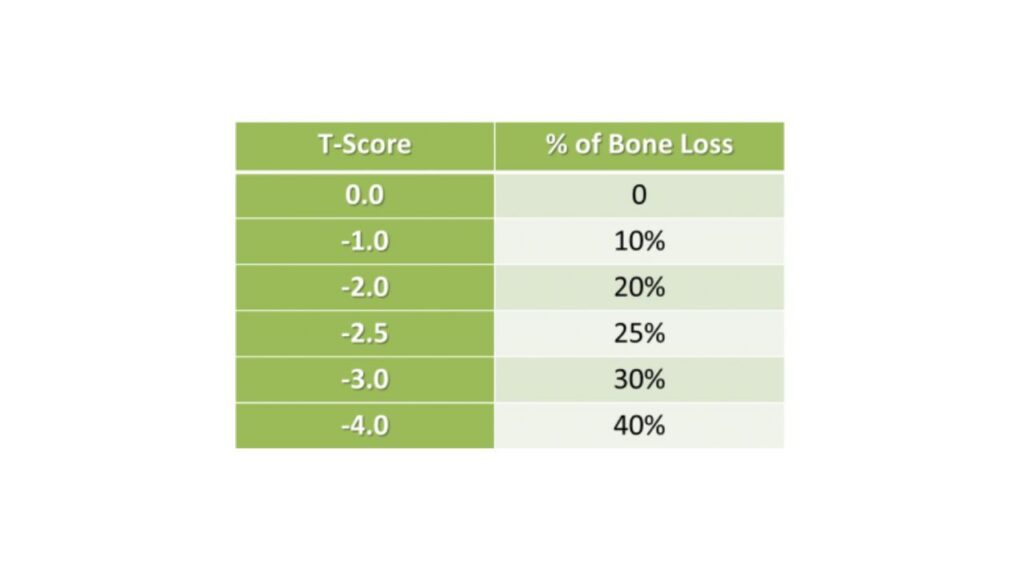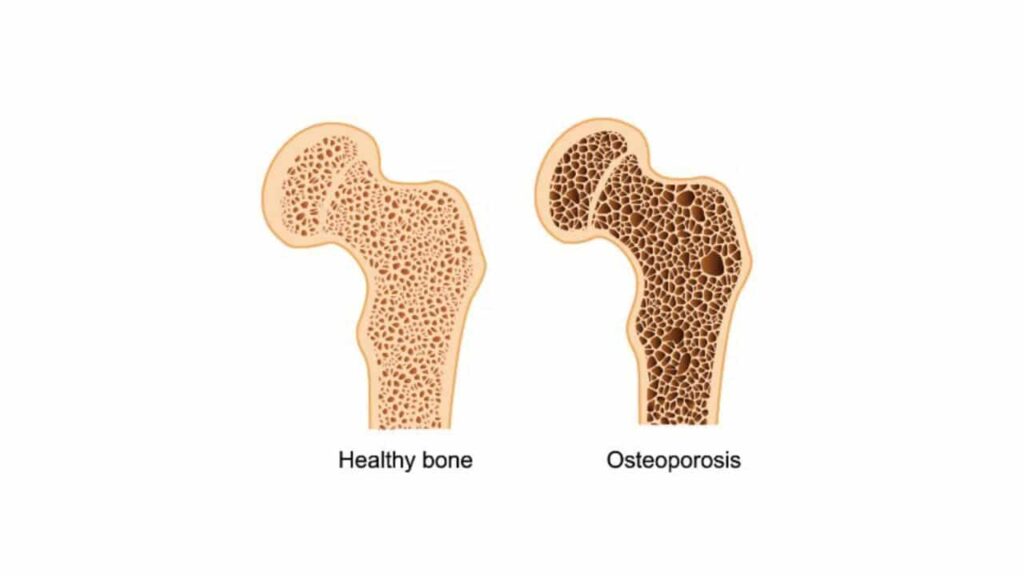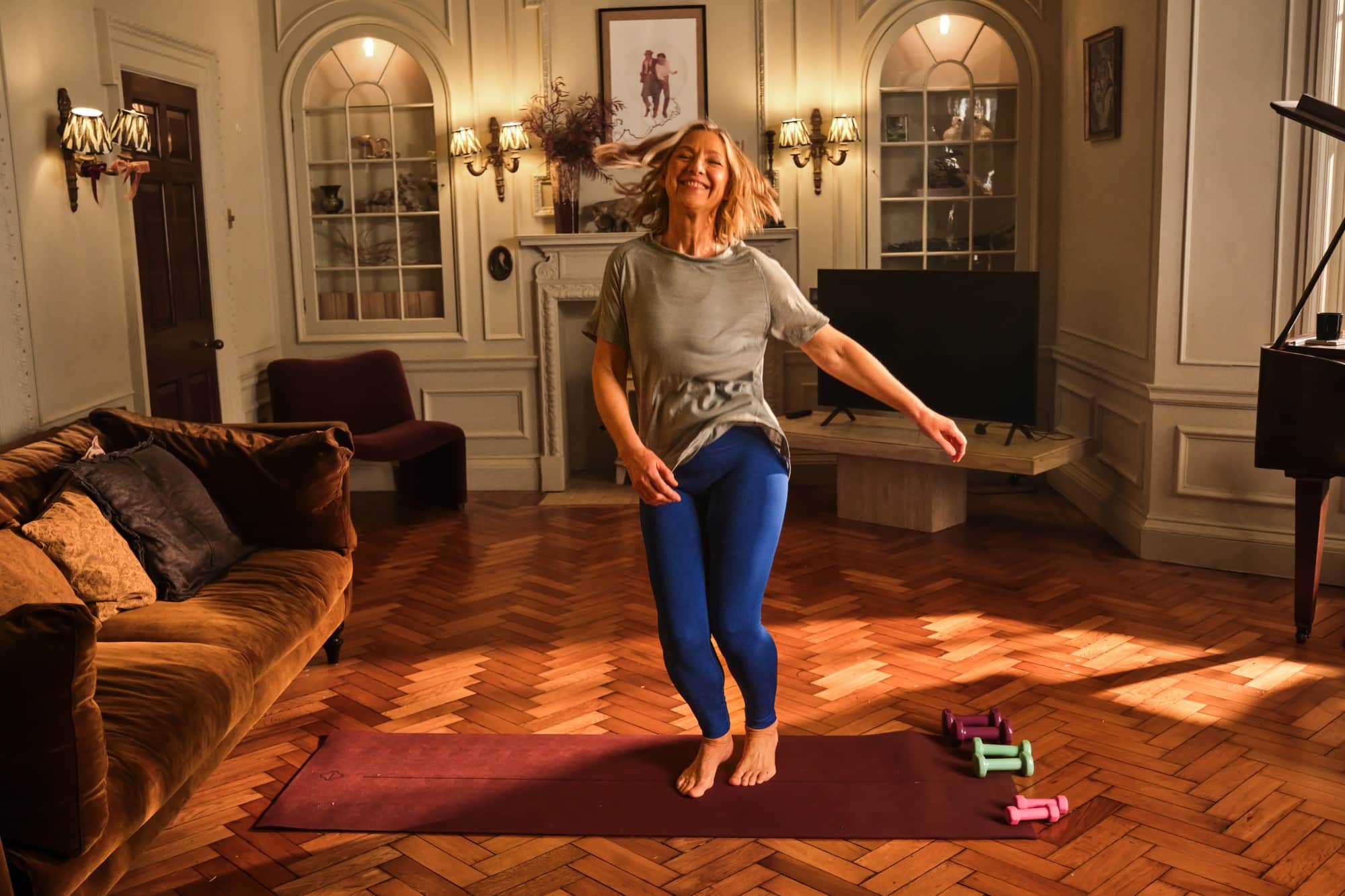How to protect yourself from weak bones and live life without limits – even as you age
Did you know that over 3 million people in the UK are living with osteoporosis, but very few people know they have it?
Well, that is, until they break a bone.
Every year 300,000 people suffer a fragility fracture (a broken bone resulting from a fall at only standing height or less), including over 70,000 hip fractures.
And In England and Wales, around 180,000 of the fractures presenting each year are the result of osteoporosis. This means that more than 1 in 2 women and 1 in 4 men over 50 are expected to break a bone at some point in the future. And as you just read, it affects way more women that it does men.
In fact, in the UK alone, up to 22 percent of women but less than 7 percent of men aged 50 years or older were estimated to have osteoporosis. Why do more women suffer from osteoporosis than men? There are several factors. But it all comes down to hormonal changes.
Women are more at risk of developing osteoporosis than men because the hormone changes that happen during the menopause directly affect bone density. The female hormone oestrogen is essential for healthy bones. After the menopause, oestrogen levels fall. This can lead to a rapid decrease in bone density, increasing your risk of breaks, trips and falls.
“It is very rare that people return to their former ability and lifestyle after a fracture”
Rob McAvoy, Goodnick Head of Programme
Why do you want to avoid osteoporosis at all costs?
Because broken bones = broken lives.
It is very rare that people return to their former ability and lifestyle after a fracture. Partly because of the fracture healing itself takes so much out of them and also because of the muscle and strength loss that occurs waiting on the broken bone to heal.
This means that even when the bone itself heals, you’re a weaker version of your former self, and completely out of routine. Not to mention the burden we likely become on others as a result. That said, it’s not all doom and gloom there is some good news to share.
Osteoporosis is entirely preventable for most. The thing to remember here is we do not just wake up one day and have osteoporosis. We don’t just catch it like a cold. It is a condition that develops over years. Muscles get weaker, bones become more brittle, and suddenly a trip happens and a break occurs. Our goal as we get older is to ensure we keep our bone density as high as possible so that if a fall does occur, our bones are strong enough to take it.
Bone strength (density) is measured by a scoring system. It’s called the T score, and it’s a way of measuring someone’s bone density via a Dexa scan. What we want is to have a T score in the range of +1 to -1. Bone density that is below -1 and above -2.5 is called osteopenia. A person with osteopenia does not YET have osteoporosis but is at risk of developing it if not treated.
In other words,they’ve boarded the osteoporosis train and they’re likely arriving soon at the next station. The arrival stop is when the score -2.5 or lower. That’s the zone that, when you enter, you are classified as officially having ‘Osteoporosis’, AKA ‘breaking point’. Here’s a graph that shows the percentage bone loss as the score gets lower, and what it looks like visually:


Strength training: your secret anti-ageing weapon
The idea of “strength training” might sound intimidating, but it doesn’t have to be. Strength looks different for everyone and doesn’t mean becoming a bodybuilder. Instead, it’s about finding what works for you. This could be as simple as:
- Doing bodyweight exercises like squats
- Incorporating resistance bands into your routine
- Using light weights during everyday movements
The goal is to maintain – and even build – muscle to keep up with the activities you love. With consistent effort, you’ll not only feel stronger but also notice improved energy levels, better balance and greater confidence in your movements.
Muscle is the foundation of an active and fulfilling life. As you age, investing in your strength is investing in your independence and happiness.
The benefits of staying strong
As you can see, the bone on the left is a strong bone, likely +1 on the T score, and the one on the right is a weakened bone ready to break under stress. Likely -2.5 to -4 on the T score.
Why am I telling you this? Because I want you to do something about it, so that it does not happen to you. Without checking, none of us really know where we are on the T zone scale. But what we do know is that due to the side effects of ageing (muscle loss, bone mineral loss, strength reduction, oestrogen increasing, hormones changing, and lack of movement) it’s likely that most adults over 60 are heading down the scale. But, with a little effort and know how, we can go back up or at least maintain.
Here’s how:
- Get stronger bones: Bones that are trained under resistance become stronger, and stay stronger, and can support a fall much better.
- Maintain your muscles: Muscles that stay active and engaged support the bones reducing our likelihood of falling in the first place.
- Balance our hormones: The stronger, leaner and healthier we are, the more balanced and stable our hormones will be, pushing back against the changes that occur during menopause.
- Eat foods that make us thrive: Foods packed with important nutrients like protein, calcium and iron, work to reduce muscle loss, bone density loss and our risk of trips, breaks and falls whilst keeping us strong and stable. The odds are stacked against us as we age, the question is are you willing to put in a little bit of extra work each week and do what’s within your control to avoid becoming one of the statistics shown above? I know you can do it and I absolutely believe you’re worth it. If you need any help with it let me know. I’m here to help. Take care and stay strong.
Rob
Goodnick Founder





